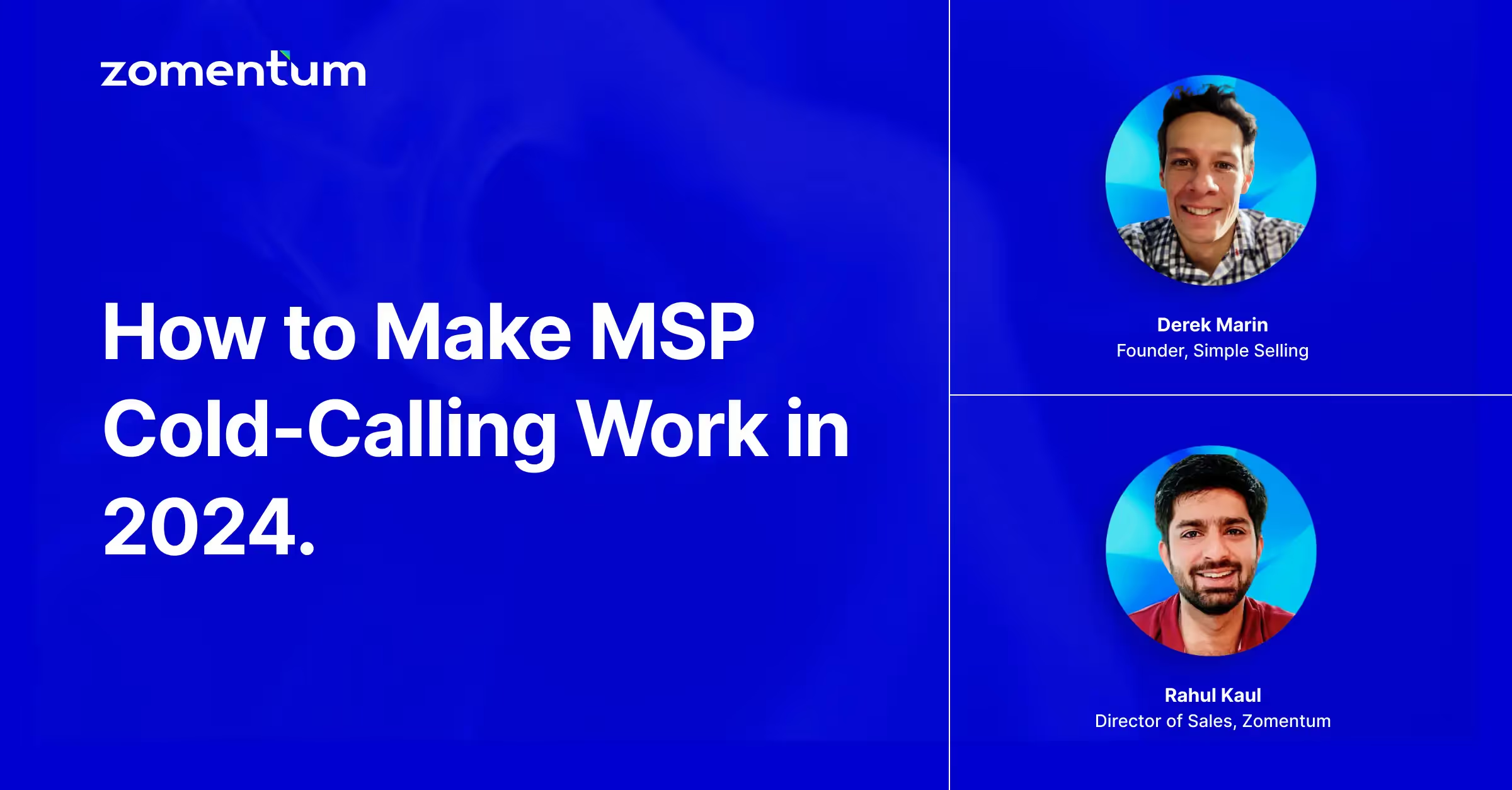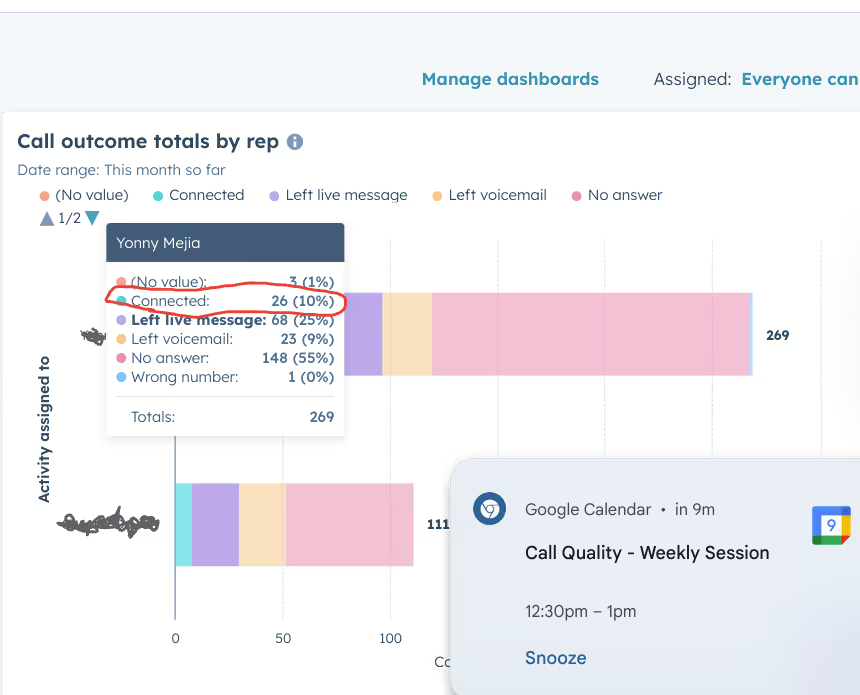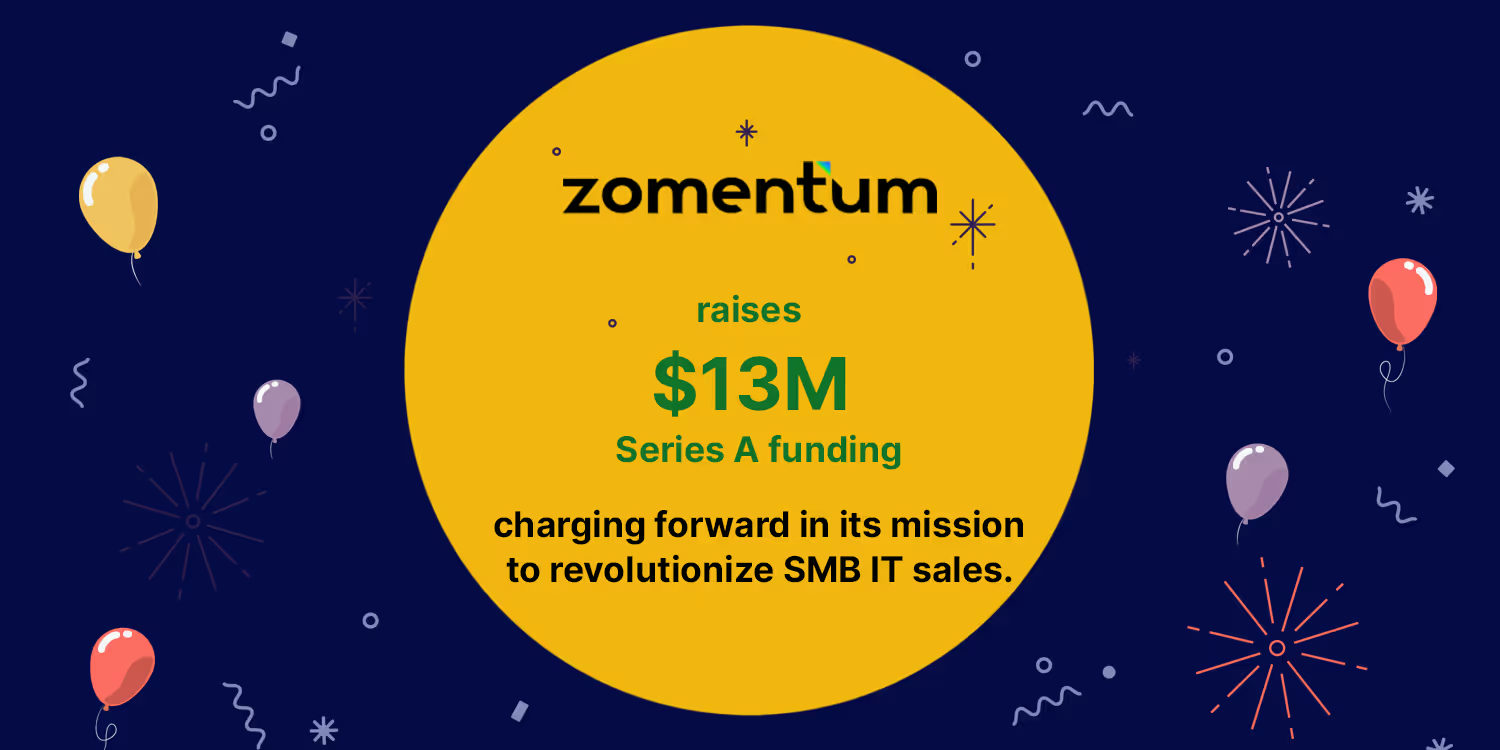How to Increase MSP Cold-Calling Connect Rates - Derek Marin, Founder Simple Selling

One of the hardest parts of cold-calling is simply getting a hold of the right decision-makers.
Decision-makers are extremely busy. They are always in a meeting or slaying Slack messages or putting out fires. Let's just say it's not easy for us to catch them at a good time.


Why should we care?
Well, if a Business Development Rep (BDR) can't connect at least 4 times a day, the odds of MSP appointment-setting going well declines substantially.
And not only that, but another risk of low connect rates is BDR burnout. Think about it.
For example, would you like a job where you make 60 cold calls and only get to speak to someone once?
So, in this article, I'll share just a few simple tips to overcome abysmally low connect rates.
Develop a Repeatable Gatekeeper Process
Receptionists, or as we call them, "Gatekeepers", are the first barriers BDRs encounter.

In our experience, the key is to be patient. Let's not burn the bridge by being too pushy or desperate!
Instead, let's have a process for how we will interact with gatekeepers.
For example, a cold-call sequence may include 6 call tasks spread over a couple of weeks, which means we could be speaking with the secretary up to 6 times!
Therefore, let's document what we'll ask in each of those calls.
Call 1 - Good morning. John Smith please... (simple and straightforward)
Call 2. Good afternoon [Mary], is Barry in please? (recall her name is Mary and try a different time of day and decision maker)
Call 3. Good morning Mary, this is Derek again, you're probably recognize my voice by now. How are you? Good to hear. So, I haven't had any luck connecting to John or Barry. Maybe you can help me out. Is John the one who oversees technology decisions there?
etc.
What matters isn't so much what you say, but it's how you say it and that we are being respectful and curious about who we should speak to and when's a good time to reach them.
Leave Voicemails to Drive Reply Rates
According to Orum, a SaaS calling platform, in over 7 million calls placed on their tool, they've observed that leaving voicemails leads to a higher pick-up rate.

We haven't measured the impact on pickup rates on our end, but we have seen increases in email open rates and email replies.
For example, here is a simple voicemail template:
"Hi John, this is Derek. I emailed you today with the subject line "cyber-insurance readiness." If have a moment, please let me know what you think of my question. Thank you, and have a great day."
We use voicemails to point prospects towards our emails because in emails, we can insert more content, and it's in a spot where prospects can reply in real-time.
Not all replies are positive, and this is OK. Because any reply is better than nothing. A "no, thank you" means we can stop wasting our time and move on to the next prospect in our queue.
Work the Account, not the Contact
Unless an MSP is targeting very small businesses or start-ups, it's fair to say that most decision-makers aren't deciding on vendor relationships alone, in fact, they are part of a committee with many decision-makers and influencers.
According to Gartner, the typical buying group for a complex B2B solution involves six to 10 decision makers‚ each armed with four or five pieces of information they've gathered independently and must deconflict with the group.
This is why BDRs should hunt the account and not the contact.
So, what does this look like in practice?
During cold calls, it means the BDR can ask for different decision-makers. In emails, BDRs can enroll more than one contact in a sequence, and we may even have different email copies depending on the persona.
An IT director looks at co-managed very differently than, say a CFO!
Therefore, it's a good idea to hunt more than one person and to keep track of your progress as you go.
Suggested Blogs

What’s new in Zomentum - December 2019
.avif)
Zomentum Announces the Top Influential Partners of 2023: Leading the Way in Growth and Innovation

